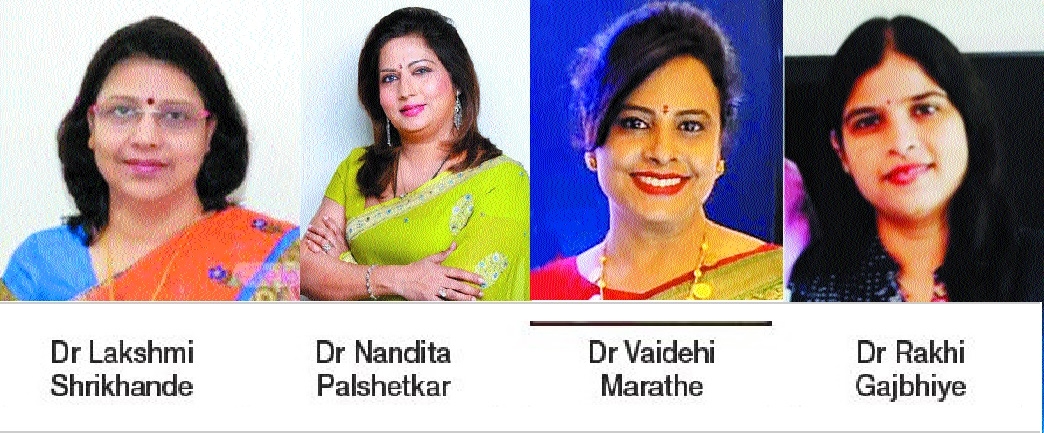Lack of awareness in rural areas, a major obstacle in MMR’s reduction
| Date :20-May-2019 |

By Vikas Vaidya:
FOGSI and other organisations are trying to bring the MMR down
There is a good news, the Maternal Mortality Ratio (MMR) in India has come down from 556 in 1990 to 130 in 2018. At the same time the complete awareness about care to be taken during pregnancy is still lacking, especially in rural area. It has become a major obstacle in the efforts of Government which is taking measures to reduce the ratio further. Explaining the causes of maternal mortality, Dr Shalini Fusey, former Head of Department of Gynaecology at Government Medical College and Hospital (GMCH) said, “There are several reasons but neglect during pregnancy is one major reason. Complications during pregnancy and childbirth are a leading cause of death and disability among women of reproductive age in developing countries.
The maternal mortality ratio represents the risk associated with each pregnancy. Women with low haemoglobin do neglect themselves and then complications take place. In high risk pregnancies where women are hypertensive or have preeclampsia, deliveries should be performed just after 37 weeks to save the life of woman. Unfortunately due to poverty, women are not keen to face deliveries. On such occasions they should be made aware about several schemes floated by Government where they don’t have to pay much amount.”
Dr Nandini Palshetkar, President of Federation of Gynaecological Societies of India (FOGSI) pointed out, “Maternal death means death during pregnancy from any cause related to or aggravated by the pregnancy or its management but not from accidental or incidental causes. In 1990 the MMR was 556 per 1,00,000 which got reduced to 374 in 2001. In 2018 it got reduced further to 130 with public sector hospitals have the ratio of 350 and in private sector it is much less--150. Quality healthcare is an important factor and Government has started taking proactive measures which I must appreciate. People’s participation, women’s own wish to live healthy life play important role. More than 55 per cent women have less than 10 gm haemoglobin.” Why public hospitals have high maternal mortality ratio? Whether the care is not properly taken? Replying to this querry, Dr Shalini Fusey said, “Actually, the maternal mortality rate at public hospitals is very less.
The reason behind the increase in ratio lies in the referral cases. We get so many referral cases from rural areas, from private sector. When the case becomes critical, it is sent to Government hospitals, with our limited resources we try our best but, since the women come in critical condition and at 11th hour, they don’t survive. These women though referred are treated as cases of public hospitals that is the reason the ratio shows so much difference.” Dr Laxmi Shrikhande, Senior Vice President, FOGSI 2012 defined MMR as the proportion of maternal deaths per 1,00,000 live births. Dr Shrikhande who is also the Vice-Chairperson of Indian College of Obstetricians and Gynecologists (ICOG) mentioned, “India has registered a significant decline in Maternal Mortality Ratio (MMR) recording a 22% reduction in such deaths since 2013, according to the Sample Registration System (SRS) bulletin released on June 7, 2018 by Ministry of Health and Family Welfare.”
Dr Vaidehi Marathe, President (Elect) of Nagpur Obstetrics and Gynaecologists (NOGS) explained about MMR, “Complications leading to maternal death can occur without warning at any time during pregnancy and childbirth. These deaths are preventable if births are attended by skilled health personnel. These mothers should be supervised regularly, These healthcare centres must have the proper equipment and supplies, if needed they should be able to refer women in a timely manner to emergency obstetric care. Complications require prompt access to quality obstetric services and the ability to provide blood transfusions if need arise for performing Caesarean sections”.
Dr Marathe who would be taking reigns of NOGS next year is planning to start mass awareness programme to help in reducing maternal morbidity and mortality. Dr Rakhi Gajbhiye, well-known Gynaecologist attributes the deaths to low haemorrhage which according to her remains the leading cause of maternal mortality. “Similar proportion of maternal deaths were caused indirectly by pre-existing medical conditions aggravated by the pregnancy. Hypertension, eclampsia, sepsis, embolism and complications of unsafe abortion can lead to deaths of mothers,” cautioned Dr Gajbhiye. “Number of gynaecologists are less to cater to the need of the number of patients.
Secondly in rural areas gynaecologist is not available. So we have come up with the programme wherein we are trying hard to train nurses to perform delivery which is a common thing in western world. At the same time we are trying to sensitise doctors through Continuing Medical Education seminars (CMEs) on taking measures to reduce MMR. Our efforts are on to bring the ratio further down to 70,” informed Dr Palshetkar. “Reducing it further will be an uphill task, as any further reductions in the MMR at the national level would require ending preventable maternal mortality. If we apply four-pronged strategy that involves 1. Review of medical records, death certificates or autopsy reports of mothers; 2. Access to quality and respectful healthcare for women, 3. Funding for infrastructure, medicines, interventions in the labour room; and 4. Training for personnel,” suggested Dr Shrikhande.